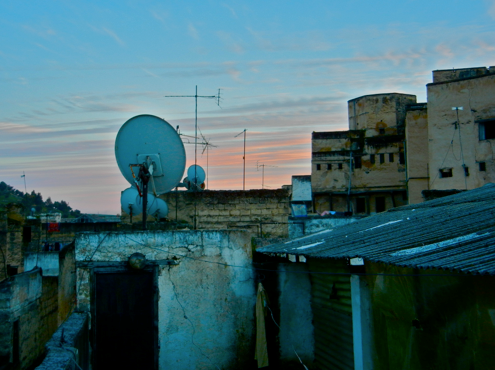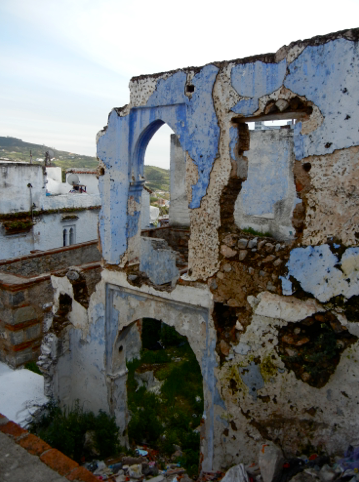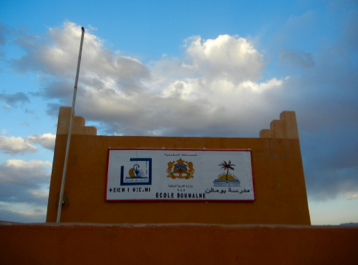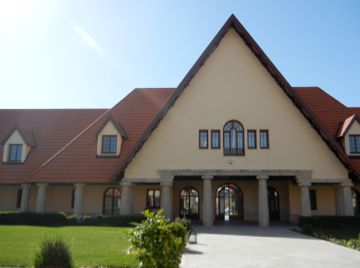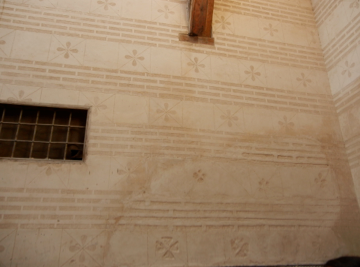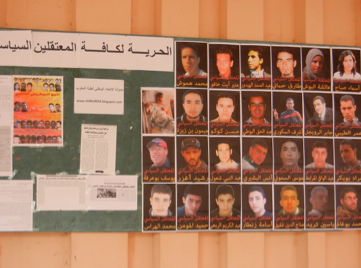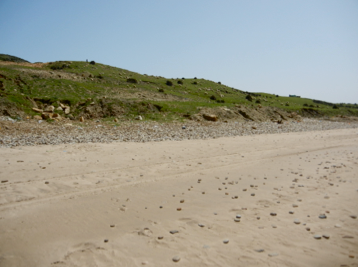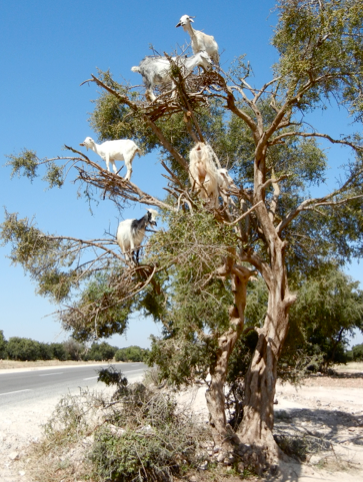By Mandy Bowers
Many of us have a fuzzy idea in our head of what a developing country looks like, or what the Middle East looks like, or even what Africa looks like. Personally, I had a fuzzy picture in my head of what my experience studying abroad in Morocco this spring term would look like. After ten weeks of extensive travel, plenty of harassment, a loving host family, and regular academic questioning, I now have a clearer picture of a developing country trapped between opposing African, Middle Eastern, and European identities.
The Medina of Fez was founded in the ninth century and reached its peak in the 13th-14thcentury. The sprawling maze of streets and tall buildings was surprisingly cool and has changed little in structure in the past few hundred years. Yet, telltale signs of changing residents grace the tops of the buildings — satellite dishes.
The rush of government-funded buildings in the 1960s and 1970s were poorly constructed, meaning that many homes across Morocco are in danger of collapse. Medinas, or old cities across Morocco, direly need restoration to protect the residents. (pictured: Chefchaouen)
Only in the past fifteen years did Morocco name Berber the official language. Despite its ancient roots and its position as mother tongue to nearly half the population, Berber is only now being introduced as a language taught in schools. The Berber alphabet was resurrected despite criticism from some who believe the language would have greater prospects of survival if written in Arabic or Latin script. In southern and eastern Morocco, where Berber is more prevalent, locals may not speak Arabic or appreciate a foreigner’s efforts to use Moroccan Arabic.
Al-Akhawayn University, Ifrane, was founded in 1994 as a Saudi-Moroccan partnership and is one of few private universities in Morocco. Although the university caters to elite students with its hefty tuition costs, if you ask the director, he will insist that the university is public because they still use the normal, government-run postage system. Ifrane, is called Switzerland of Morocco and is known for its European style homes, skiing, and frequent snowfall.
Some restoration efforts, in the name of tourism, are laughable. Can you see what was restored versus original in this picture? Your hint: the bottom faded before the top. When donors fund restoration projects, lack of oversight usually means that intermediaries choose the cheapest contractors available and pocket the difference. Restoration efforts may therefore be little more than scratching a pattern back into a wall — an outcome better described as vandalism than restoration.
In contrast to typical views of developing countries, Casablanca is now home to “Morocco Mall,” complete with an IMAX theater, a constructed pond overlooking the ocean, a star-studded ceiling, and an indoor aquarium.
A public university in Fez displays a bulletin board with the names and faces of jailed students who boycotted the university. Student governments regularly organize boycotts of classes and exams to oppose the governments’ lack of action on unemployment. The government usually responds with military force, in the guise of police action. All students are required to participate in the boycott, whether they agree or not.
The new opening of a mall in downtown Fez with a Carrefour attracts crowds of Moroccans in their best clothes to see and be seen. A few eighty year old women approach the escalator, remain immobile at the top for thirty seconds in fear of stepping on, and eventually dive back into the crowd that has formed behind them for the safer option: the elevator.
“Paradise Beach” in Assilah, Morocco, may remain an isolated home to sheep. The road out to the beach is so potholed and torn apart that only a four-wheel drive travelling below a mile an hour can reach the hidden beach.
Moroccans associate tourists with wealth, and many Moroccans have learned to cater to tourists in hopes of making a little extra money. Argan farmers harvest and crush Argan nuts to create the famous oil. Goats enjoy eating the nuts and tourists enjoy watching the goats climb the trees to eat the nuts. Thus, Argan farmers enjoy selling tourists photo-ops with baby goats and Argan oil.
